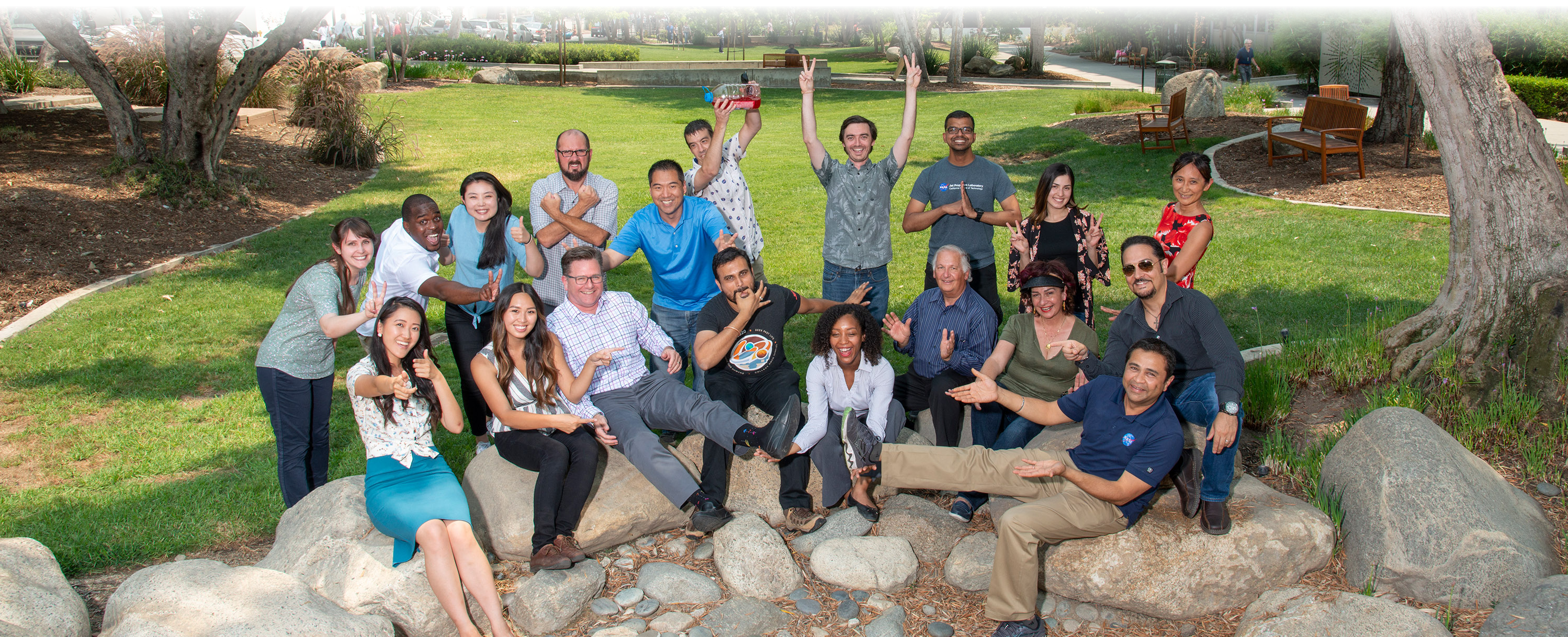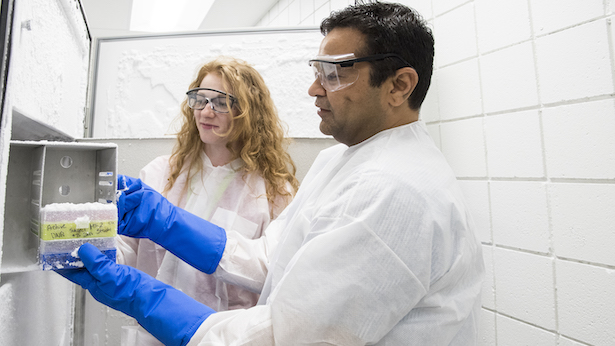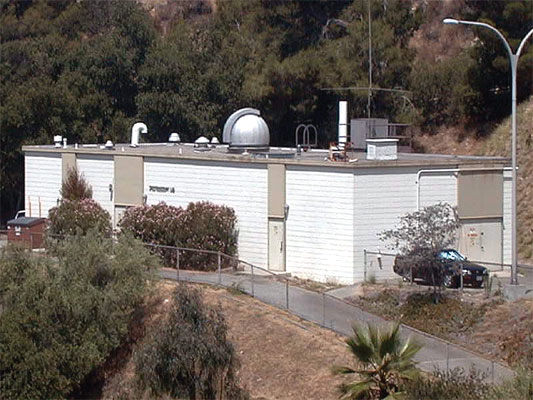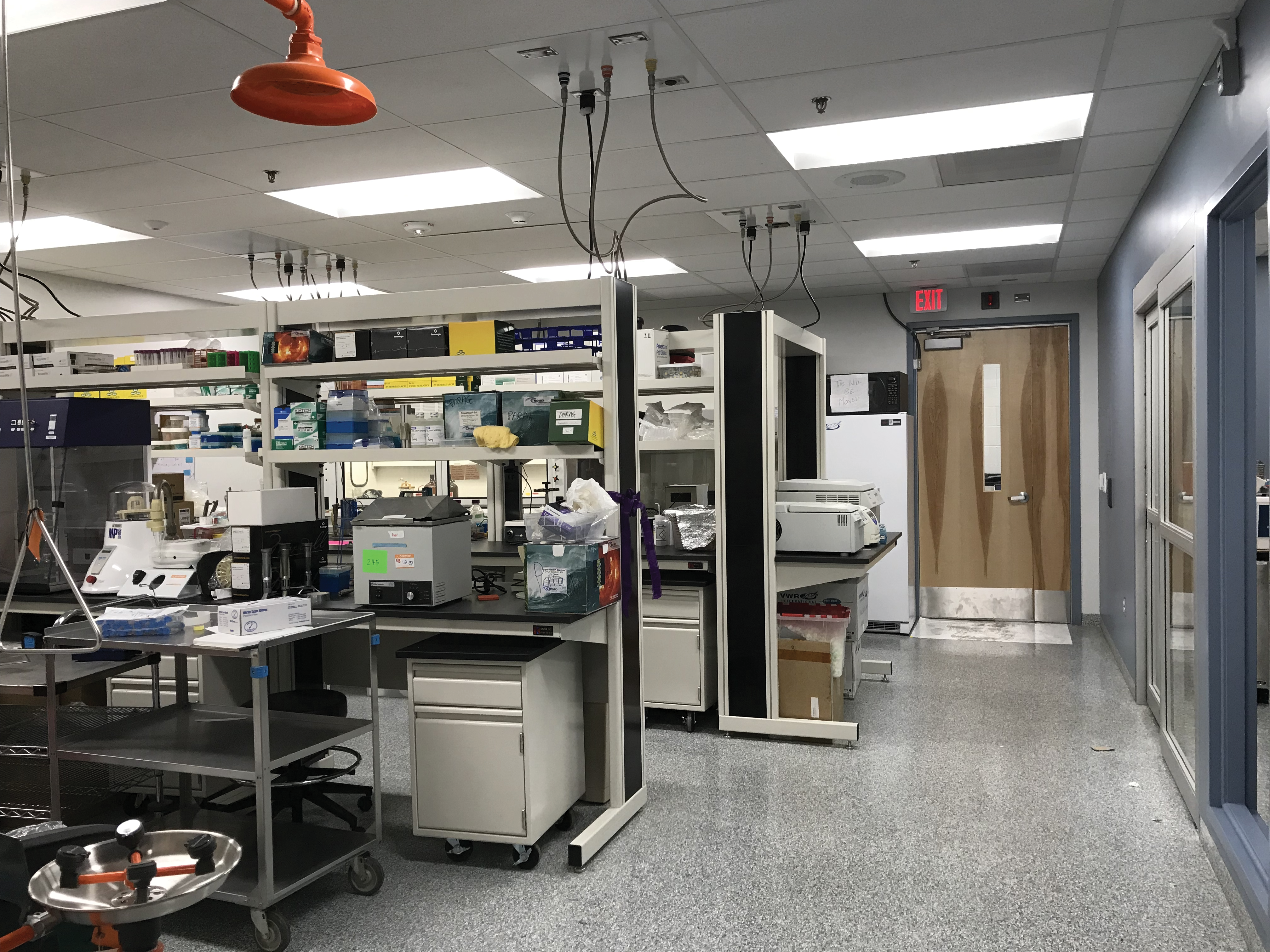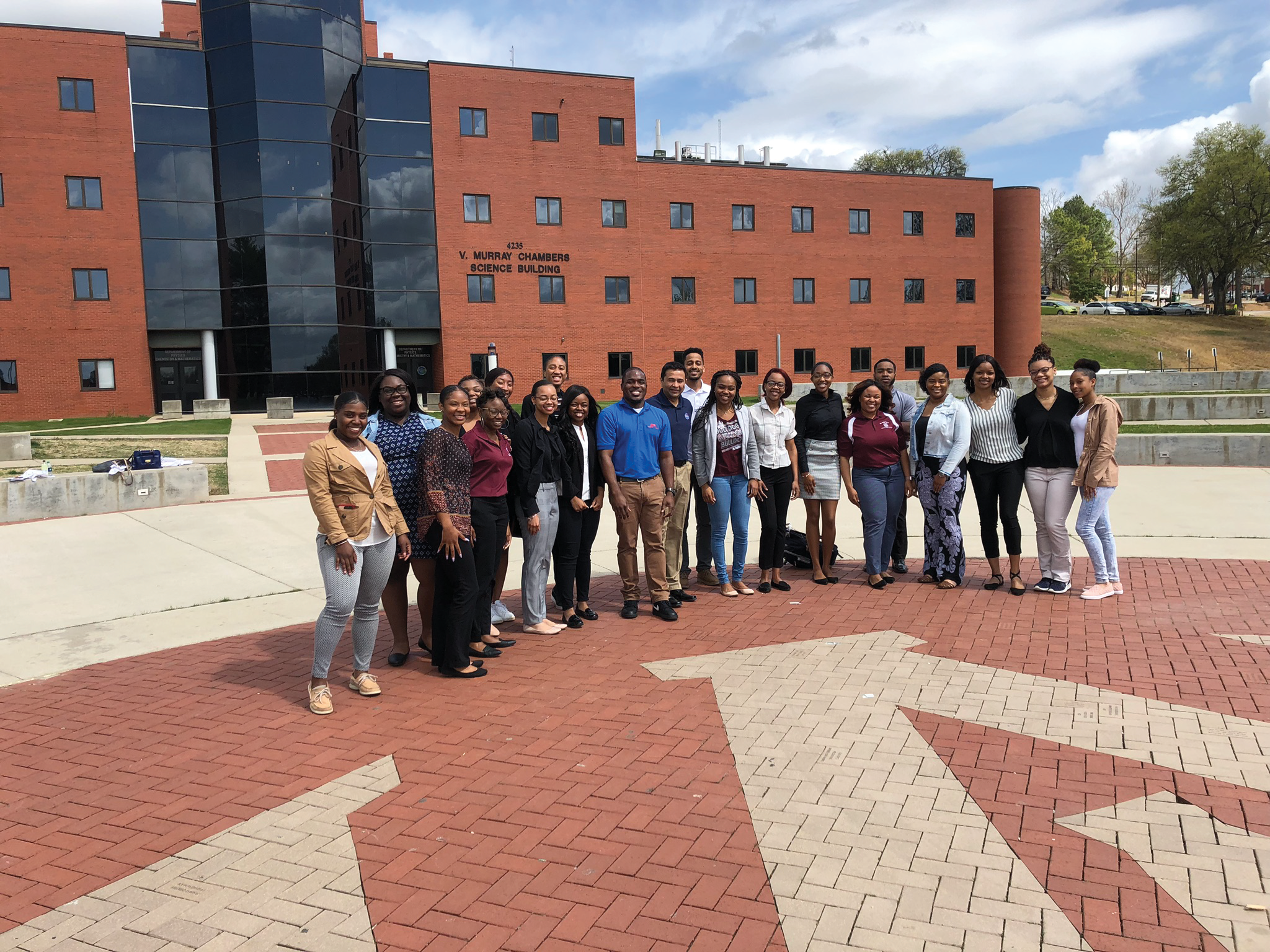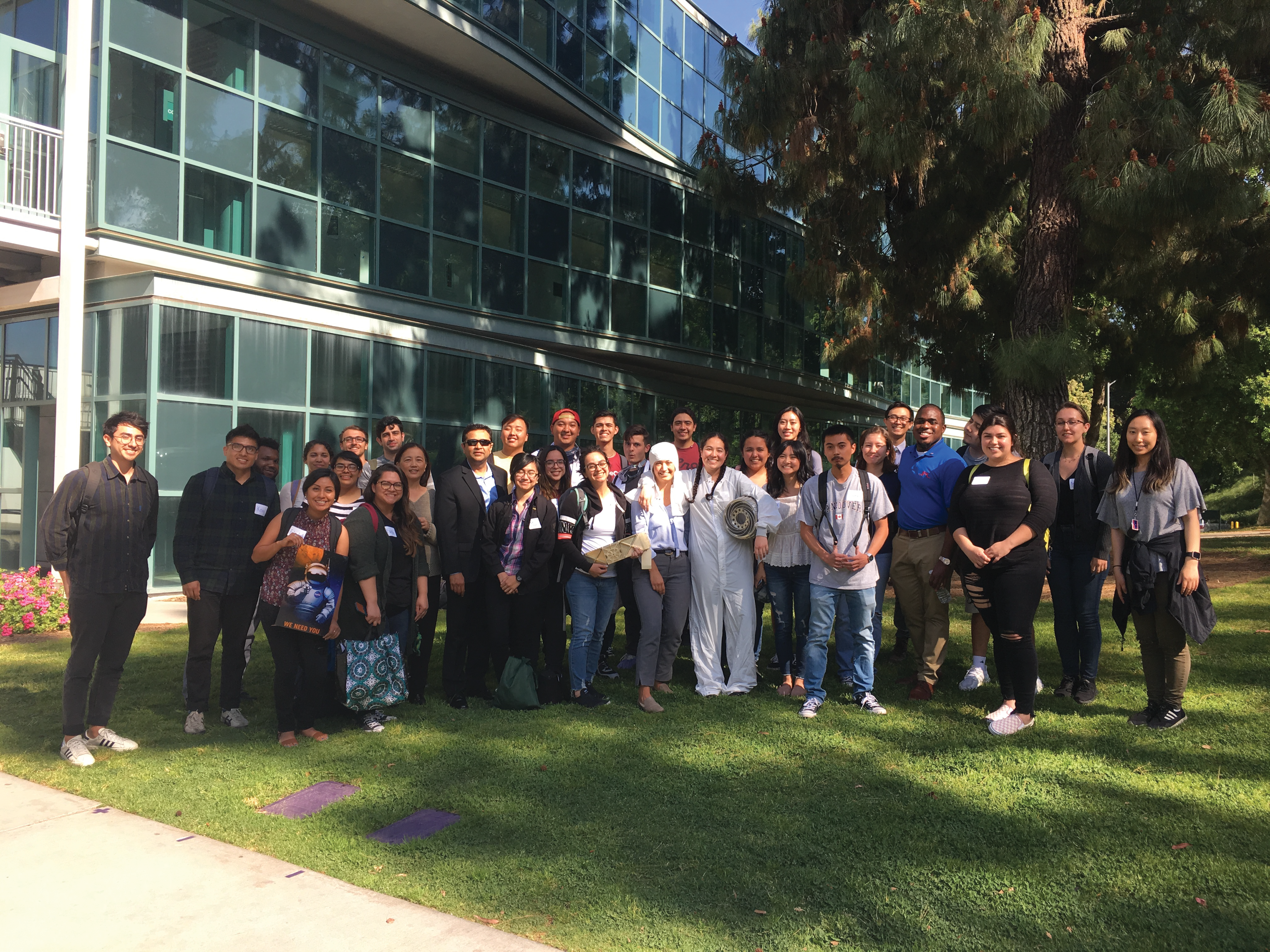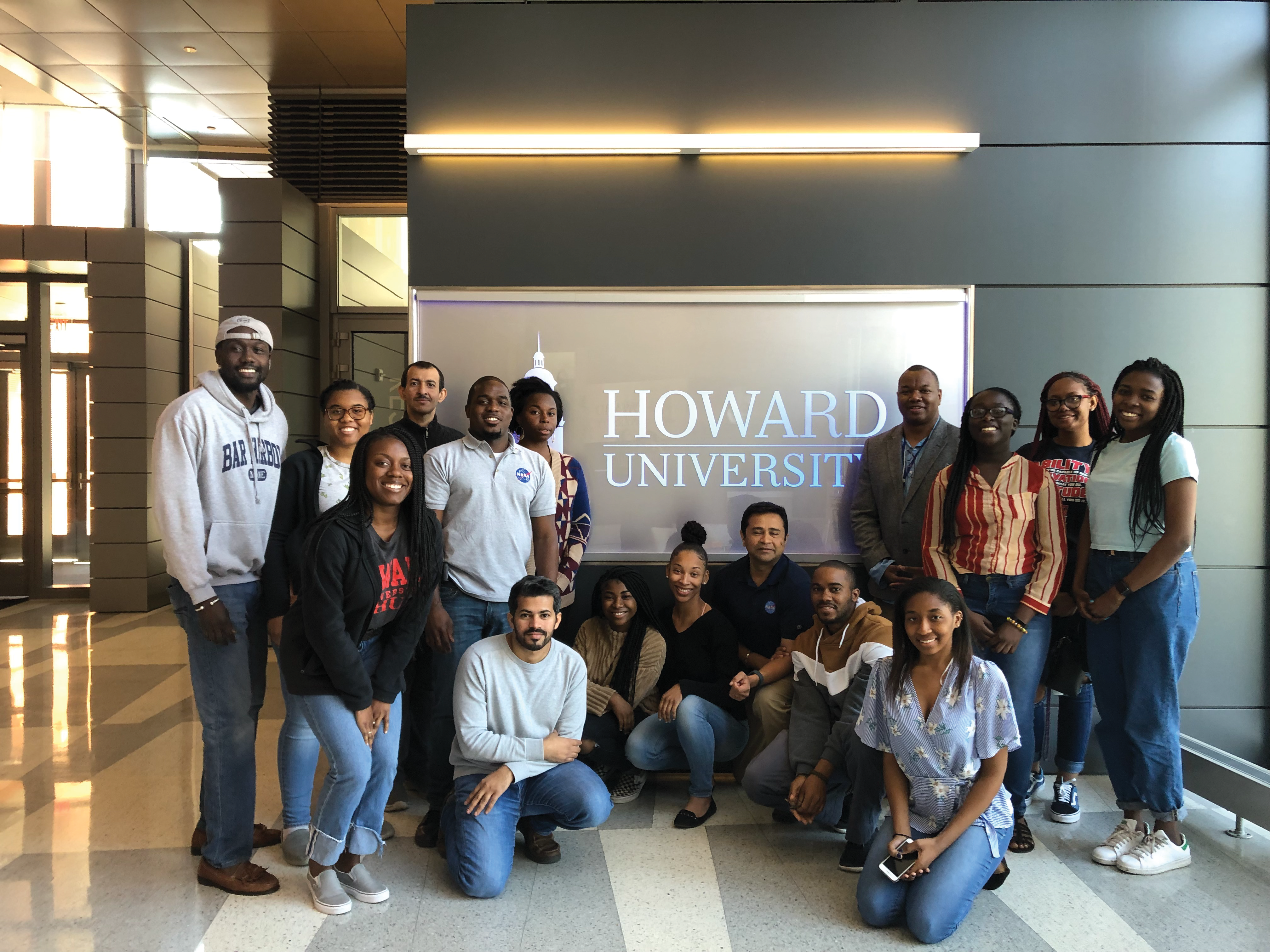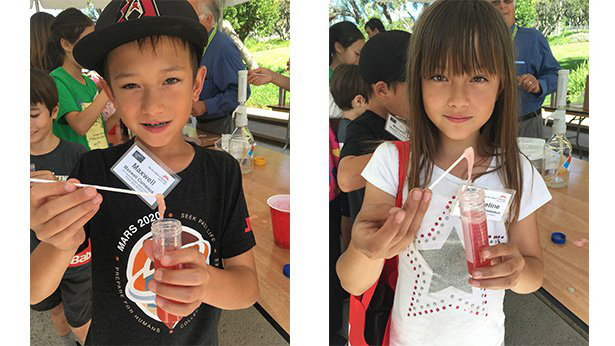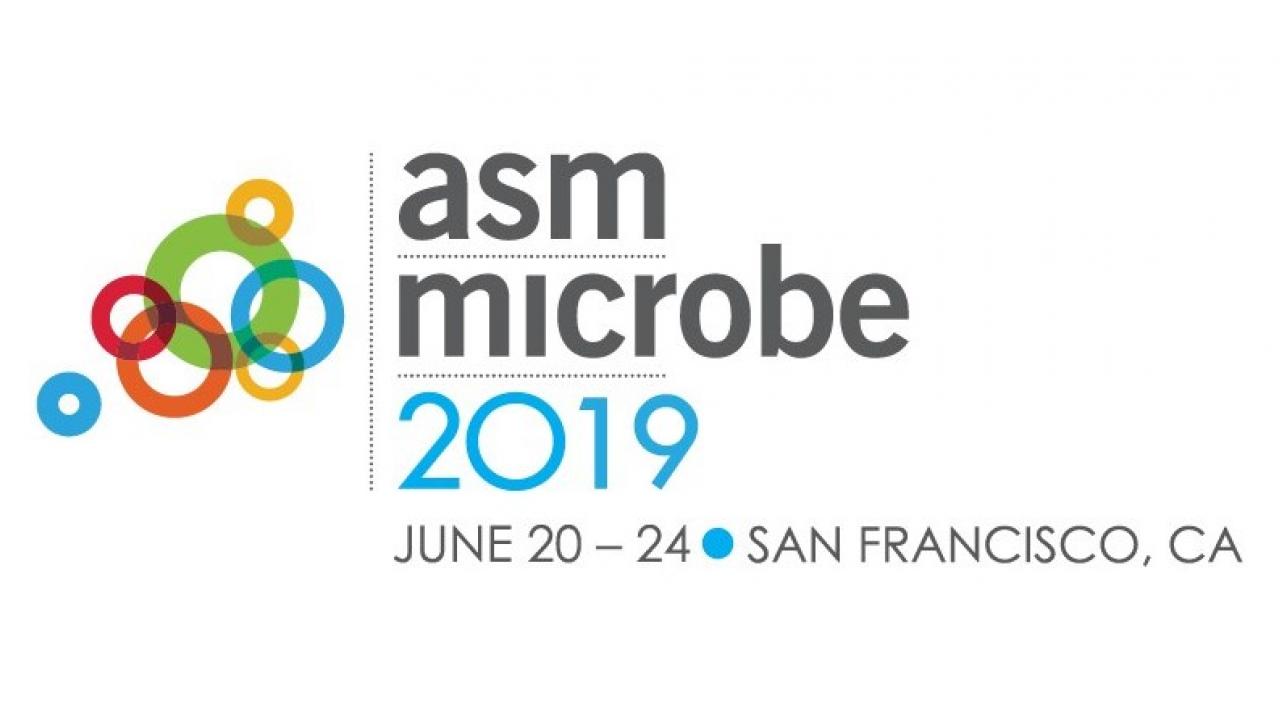New JPL PP Lab
The Space Biotechnology & Biomolecular Lab and the great relocation
Project Euro
Students hands on experience performing NASA Spore Assay at four HBCU/MI institutions
Mars Cube One
The very first deep cubesat mission to fly by itself on an interplanetary trajectory
GREETINGS!
 Alvin L. Smith, Ph.D., PMP
Alvin L. Smith, Ph.D., PMP
Manager of Planetary Protection Center of Excellence
Welcome to the first edition of the Planetary Protection Center of Excellence (PP CoE) newsletter! Our goal is to promote ongoing PP-related research, previous and upcoming events, and foster a spirit of information sharing with clients, stakeholders, and the JPL community. Through our PP-CoE, we are ensuring our scientists and engineers are equipped with state-of-the-art technology, remain effectively trained, lead mission-related R&D projects and technology integration, and leverage leading government and industry advancements so that they can better fulfill JPL’s multi-directorate needs. Our technical vision reaches across several domain areas and ensures JPL’s Biotechnology and Planetary Protection Group (BPPG) has the right capabilities, talents, tools, and expertise to offer the very best solutions to meet NASA’s needs and challenges.
 Brian G. Clement, Ph.D.
Brian G. Clement, Ph.D.
Supervisor, Biotechnology and Planetary Protection Group
It’s with great pleasure that I welcome you to JPL’s Planetary Protection CoE Newsletter. Every day, JPL’s planetary protection engineers use cutting edge technologies and science to understand and control the potential transfer of Earth organisms by spacecraft that explore the planets, moons and asteroids out in the Solar System. To enable such potentially transformative science, our engineers are currently working to create novel and robust designs for returning and containing extraterrestrial samples in a safe, responsible manner.
Spaceflight is well known to be both demanding and rewarding. Indeed, applying biotechnology to enhance planetary science and the search for life in our Solar System is full of fascinating challenges and we hope this newsletter gives you a chance to share in our exciting work and discoveries.
New JPL PP LAB
The Planetary Protection Lab arrives at new home, B245!
On August 28 2019, the Biotechnology and Planetary Protection Group (BPPG) completed a process that many see as arduous and with a nervous, uncertain outcome—moving. Unlike the typical office or home move, however, the BPPG picked up and transferred the contents of their laboratories—a much more complex, although highly rewarding, undertaking. Planetary Protection Group Leadership including Dr. Parag Vaishampayan, Dr. Kasthuri Venkateswaran, Dr. Camilla Urbaniak, and Dr. Melissa Jones spearheaded the effort, which oversaw not only the move but also the design and construction of the new laboratory. A fungal laboratory, a cleanroom, and a microbiology lab were all consolidated into a single building thanks to the team’s efforts.
The initial design process for the new building, dubbed the “Space and Biotechnology and Biomolecular Lab,” started in October 2016 with Dr. Jones and Dr. Vaishampayan working on the preliminary laboratory design. They then collaborated with JPL architects to maximize the efficiency of the given laboratory space as well as to create a state-of-the-art area for conducting planetary protection research & technology development work. The move itself was challenging not only from a logistics standpoint, but also from a consolidation standpoint. In fact, two laboratory buildings, one office building, and a storage trailer of microbiology laboratory equipment merged into a single structure in the end. The new lab includes a biomolecular cleanroom with gowning area, fungal lab, modular microbiological lab, microscope room, prep room and supply storage area. As the final changes were placed on the brand new laboratory the Planetary Protection Center of Excellence additionally assisted by supplying audio/visual (A/V) equipment for presentations and meeting coordination. The entire task was a quintessential team effort.
The new lab replaces buildings 86, 89, and 98, which were some of the initial planetary protection structures at JPL. Decades ago, these initial buildings housed a variety of laboratory equipment over time, including an industrial calciner (which produces activated carbon for water purification) as well as a solid rocket fuel test lab in Building 98. The calciner and rocket fuel were eventually replaced by microbiology equipment including microscopes, culture hoods, and incubators. Wayne Schubert, a Planetary Protection research scientist, has worked in the labs for 45 years and remembers the lab’s history fondly. He moved in when the Building 98 laboratory was brand new from a science standpoint, back in 1976. At that time the planetary protection laboratory was still acting as a chemistry and water quality laboratory (not a microbiology laboratory), but during the energy crisis of the early 1980s the laboratory became a bioenergy laboratory investigating nitrogen fixation, cellulases in fungi, and other bioenergy conversion strategies. The Biotechnology and Chemical Processes Group, as the BPPG was called at that time, acquired NASA funding to fly an experiment, Radiat, on the space shuttle and study the effects of radiation on nematode development. Then, as the only operational biotechnology laboratory at JPL during the early 1990s, contamination control engineer Jack Barengoltz helped turn Buildings 86 and 98 into full planetary protection microbiology laboratories to help launch the Mars Pathfinder mission in 1996.
At the end of August 2019 the brand new “Space and Biotechnology and Biomolecular Lab” launched with an official ribbon cutting ceremony. Experiments commenced and more planetary protection research into space metagenomics and molecular biology moved the Planetary Protection field to a new height. However, despite the glitz and the glimmer of the new lab every scientist setting foot in the new building will fondly remember the origins of their group and of the first biotechnology research buildings at NASA JPL. They may have been old, dusty, and outdated, but they supported Planetary Protection as it grew into the field it is today. They are gone, they will not be forgotten, and the new laboratory’s increased capability will consistently remind scientists of the past while propelling them into the future.
written by Zachary Dean
contributed by Camilla Urbaniak, Parag Vaishampayan & Wayne Schubert
Project EURO
Planetary Protection: The Next Generation
With the signing of the White House Initiative on Historically Black Colleges and Universities, the federal government has continued efforts to increase diversity. This push has also extended across the JPL lab, as they have partnered with more with Historically Black Colleges and Universities (HBCUs) and Minority Serving Institutions (MSIs) for research opportunities, student internships, and other contracts. Planetary Protection Center of Excellence manager, Dr. Alvin Smith teamed up with, Planetary Protection scientist, Dr. Parag Vaishampayan to lead these diversity efforts for planetary protection. Together, they created the EURO (Enhancing Undergraduate Research Opportunities) project, a continuation of the 2018 MICRO (Multi-Institutional Cooperation for Research Opportunities) project to train the next generation of planetary protection scientists and engineers. The EURO project provided a 2-day hands-on training session that taught the fundamentals of planetary protection to over 100 students at 4 different HBCU/MSI universities across the U.S. Students learned about JPL missions and the basics of the NASA Standard Assay, an integral component of the Planetary Protection spacecraft bioburden evaluation and assessment suite for prelaunch bioburden determination.
While the EURO project was unique to these universities, the concept had been developed as part of Dr. Vaishampayan’s involvement with the National Science Foundation (NSF), where work with local universities began at Cal State Los Angeles. The NSF program’s long-term objectives also included taking this model and extending it out to other students and universities, a similar outreach goal as the Planetary Protection Center of Excellence.
EURO commenced in three phases. During Phase 1, beginning in the summer of 2018, where Drs. Smith and Vaishampayan hosted four students from two HBCU/MSI institutions, CSUN and Alabama A&M, to participate in a ‘Microbiology Bootcamp’ workshop at NASA JPL, this allowed the students to learn the basics of characterizing novel organisms. The event was successful to the point that the students were able to characterize and name four novel bacterial isolates during their time at JPL, findings that are planned for publication.
With successful funding obtained internally through JPL for the second year in a row, the bootcamp could now leave JPL and enter the classrooms at the universities, reach many more students. Taking the lessons learned from the JPL bootcamp, Dr. Smith and Vaishampayan condensed the training into a 2-day program at universities across the United States. In this effort, four HBCU/MI institutions were included and an average of 25 undergraduate students participated from each institution: California State University Northridge, Alabama A&M, California State University, Pomona, and Howard University. Students not only received an introduction on the historical and innovative work done at JPL, but also received hands-on training, detailed presentations and a laboratory exercise on Planetary Protection’s role at JPL, and in flight projects. The hands-on training also included how to properly put on cleanroom “bunny suits,” collect swabs and wipes samples, and perform the NASA Standard Assay, a culture-based bioassay technique. Many of the students never considered biology a discipline that was practiced at in support of NASA. “I never knew biology was rocket science,” noted several students at California State Polytechnic University, Pomona.
Following the laboratory exercise, students presented their assay data and engaged in discussion about astrobiology the ability of their results to meet NASA’s stringent requirements for exploration of planetary bodies for a mock mission. Some universities even engaged in staged debates over planetary protection when accessing commercial industry’s role in space exploration, a timely discussion as NASA is currently re-evaluating technical trades for planetary protection and commercial sector. Future plans for EURO include selecting students from the universities to perform comprehensive research on characterizing novel bacterial species isolated from NASA spacecraft surfaces at their own institutions. This last phase started in June, and will continue until all isolates are characterized, named, and published in a peer-reviewed journal.
EURO is also a potential stepping-stone to a JPL-sponsored university capstone class on Planetary Protection research. With adequate funding and support, more university visits to HBCUs and MSIs could be on the horizon for JPL and partner universities. Establishing a virtual classroom to further increase the connection between students and JPL engineers a goal for the Planetary Protection Center of Excellence. The future is bright for the next generation of PP engineers that will help support future missions.
written by Zachary Dean
contributed by Alvin Smith & Parag Vaishampayan
Mars Cube One
Signal Heard Loud and Clear! Time for Planetary Science
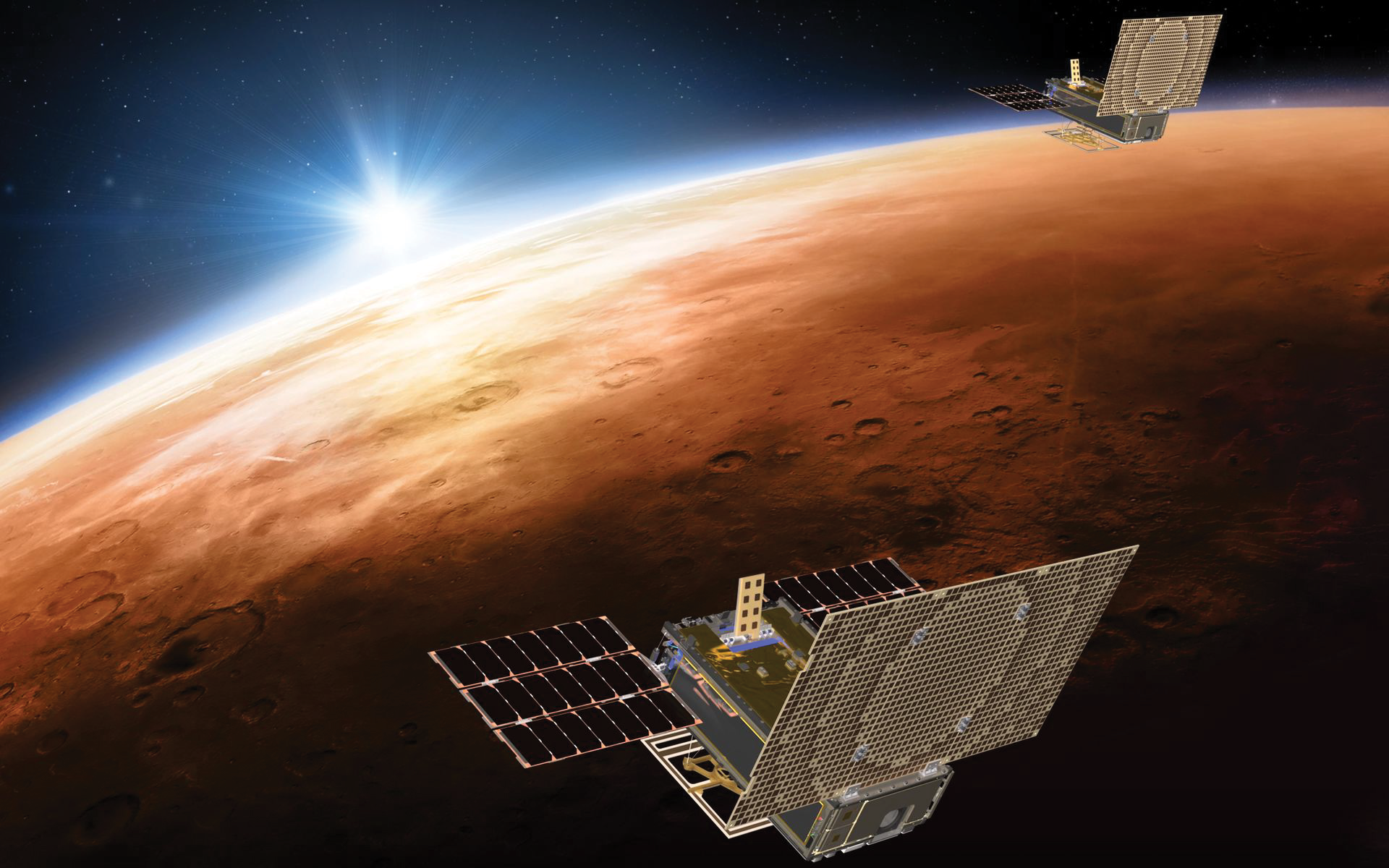
In February 2018, Mars Cube One, or MarCO, became the first CubeSat mission to meet planetary protection requirements for flight. Launching on May 5, 2018, alongside the InSight Mars Lander on an Atlas V rocket in California, MarCO met all of its technology demonstration goals within the first few weeks Its mission. The briefcase-sized spacecraft weren’t done, though. MarCO continued to set firsts all the way to Mars. On November 26, 2018, both MarCO spacecraft relayed data back to Earth as InSight landed on the Red Planet. Thanks to MarCO, JPL was able to capture 95% of Insight’s critical landing data and transmit its first picture around the world within just a few minutes after landing.
Fulfilling planetary protection requirements often requires highly creative and diverse implementation strategies. MarCO, presented a particularly unique challenge for planetary protection implementation, as it was the very first cube satellite mission to fly by itself on an interplanetary trajectory. Often, spacecraft trajectories are analyzed for target impact probability and adjusted to minimize the impact chance, helping to reduce target body bioburden contamination probability. Spacecraft bioburden can also be measured and accounted for on surfaces, inside bulk materials prior to launch, and during spacecraft transportation to determine hardware cleanliness. These factors were both considered, but the low-cost nature of MarCO, and of cube satellite missions in general, limited the analysis and increased the spacecraft bioburden risk.
With the guidance of the Planetary Protection Group at JPL however, a comprehensive, widespread, and varied suite of bioburden analyses resulted in a successful MarCO planetary protection implementation. The two MarCO spacecraft were designed to serve as communication relays for InSight during entry, descent, and landing on Mars. As the mission planning and construction progressed, both MarCO spacecraft initially met planetary protection compliance by trajectory alone; however, a delay related to an InSight instrument pushed the mission back 26 months. When the new launch window was analyzed, one of the MarCO trajectories no longer met the planetary protection Mars impact avoidance probability requirements. Another planetary protection approach was needed to establish a safe flight to Mars.
The MarCO planetary protection challenge then shifted to understanding if both spacecraft met the microbial spore burden limits imposed for spacecraft landing on Mars. Dr. Brian Clement, MarCO Planetary Protection Lead, interfaced with hardware engineers and operations personnel to understand the mission and spacecraft details in order to make a reliable estimate of MarCO’s bioburden. To start, an all-inclusive MarCO hardware equipment list was assessed to establish a conservative estimate of spores present on MarCO spacecraft. Then, bioburden reduction credit was taken for manufacturing processes such as insulation bake-out and circuit board re-flow heating. Finally, a burnup and breakup analysis was performed.
The planetary protection story was not completely finished. Accompanying InSight on their voyage to Mars, the MarCO cube satellites not only needed to meet their planetary protection requirements, but they also needed to ensure that any microorganisms present inside their cold propellant during flight to Mars don’t contaminate the trailing InSight spacecraft as well. Two studies set out to measure spores present in spacecraft propellant: a propulsion fluid bioburden analysis and an evaluation of plume geometry. These studies eventually concluded that the thruster propellant and plume did not pose contamination potential for InSight.
Looking forward, MarCO’s success as a planetary protection challenge has provided the Planetary Protection field with valuable examples to look back on as missions continue to increase in complexity. By taking into account manufacturing and in-flight bioburden reduction credit as well as taking into account the burnup and breakup of the spacecraft upon entry into the Martian atmosphere, future flight missions can fly with minimal contamination risk.
written by Zachary Dean
contributed by Brian Clement
Other Stories
Planetary Protection Scientists host the NASA astronaut, Kate Rubens
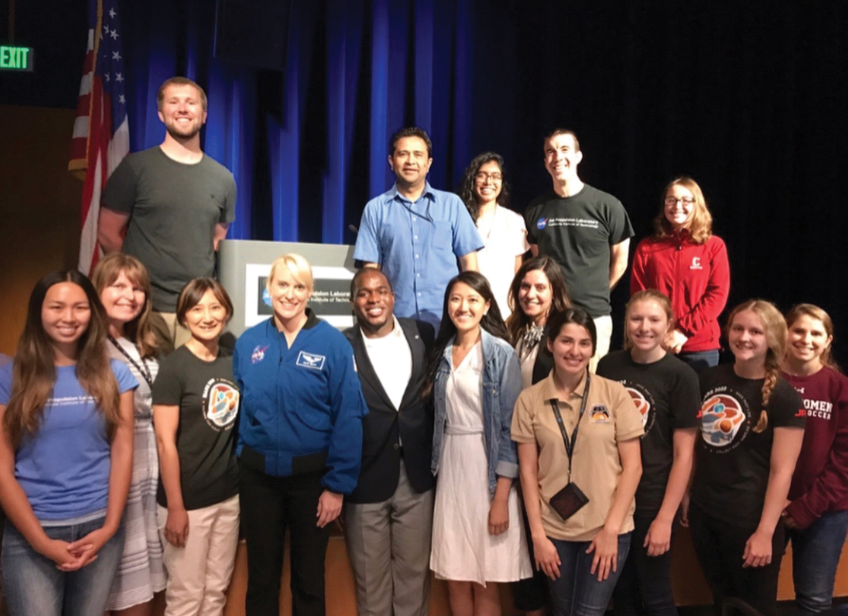
The Center of Excellence at JPL continues to support collaborations within NASA centers, academia, and other scientific organizations by inviting distinguished speakers to share their expertise. Last summer, the JPL von Karman Auditorium filled with curious employees and students as they attended the PP CoE Seminar Series with NASA astronaut, Dr. Kate Rubins. Dr. Rubins shared her experiences conducting microbiology research on the ISS as well as the scientific and engineering factors required in preparation for spaceflight missions. This was a close-up experience where the audience members were able to interact with Dr. Rubins and spend quality time post-talk with the first person to sequence DNA in space! The Seminar Series also continues to invite distinguished guests to JPL such as astrobiologist Wayne Nicholson, who specializes in the survival and response of bacteria to extreme extraterrestrial environments such as in space and on Mars. The goals of the Seminar Series remain focused on developing innovations from research, bridging knowledge gaps, and facilitating the flow of communication within the scientific community.
PP Engineers highlight DNA Extractions to ‘Take your Children to Work Day’ at JPL
Every year, JPL showcases fun activities related to different groups on campus for “Take Our Children to Work Day.” More than 650 kids participated in this past year’s event, where the Biotechnology and Planetary Protection Group (BPPG) assisted them in extracting DNA from strawberries. BPPG members explained the chemistry behind the extraction to the children and demonstrated the similarity of the biological processing to their work. The most rewarding part of the activity for many BPPG members Included watching the children react to the sight of the gooey textured strands of DNA and strawberry cells pulled from the concoction. The impact of the activity also extended to parents who requested protocols to incorporate DNA extraction into upcoming science fair projects with their kids.
PP Engineers present New Data at Microbiology Conference
The Biotechnology and Planetary Protection Group (BPPG) proudly presented at the American Society for Microbiology (ASM) Microbe 2019 Conference, the largest microbiology conference in the world hosted this year in San Francisco, California. The participants were able to network with peers in both academia and in the biomedical industry, encounter vendors and suppliers, and position themselves as experts in astrobiology. During the conference, the BPPG was also able to present three posters on microbial reduction and enumeration. Zach Dean discussed his work on discontinuous heat microbial reduction process control, and Emily Seto exhibited an evaluation of microorganisms present in bulk materials such as plastics as well. Emily Klonicki was selected to give an oral presentation and in addition received an Outstanding Abstract Award for her work on the “Heat Inactivation of Microbes Embedded in Aerospace Materials.” During the conference, BPPG members met with industry professionals and university professors interested in planetary protection technology, further expanding the BPPG’s diverse suite of microbial tools knowledge.
written by Emily Seto & Zachary Dean
Important Dates
Connect With Us
Planetary Protection Center of Excellence
Jet Propulsion Laboratory
Editor: Daniel Yoon
Email us at: planetprotection.coe@jpl.nasa.gov

